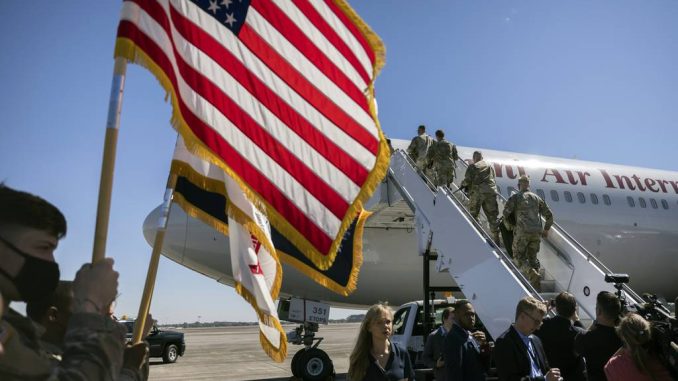
Another 500 troops are Europe-bound, the Pentagon announced Monday, in support of NATO countries as Russia’s invasion of Ukraine continues through its second week.
The new deployment isn’t in response to any changes on the ground, a senior defense official told reporters, but part of the roughly 15,000 troops that have been put on heightened alert to deploy since early February.
“These enablers were already kind of queued up to go in,” the official said. “Again, it’s fully supportive of our efforts to be able to defend NATO airspace if needed.”
They include:
- An unspecified number KC-135 Stratotankers to Souda Bay, Greece.
- Air support operations to Romania and Poland.
- Ordnance and maintenance companies to support 1st Armored Brigade Combat Team, 3rd Infantry Division, who left for Germany beginning Feb. 27.
The units and specific numbers from each group aren’t yet available, the official said, as the services work to source the requests.
RELATED
:quality(70)/cloudfront-us-east-1.images.arcpublishing.com/mco/QW53DZE23BHHHDJ7WMOXCCR6KM.jpg)
The move brings the total of U.S. troops activated to support NATO countries, or specifically as part of the NATO Response Force, since February to 14,500. They are spread out from Estonia at the northern end of NATO’s border down to Romania.
As of Monday, the official said, the Defense Department believes that nearly 100% of Russian 190,000 troops amassed along Ukraine’s border earlier this year have moved into the country.
At the same time, Russia’s efforts to advance on and take major population centers continue to be slow. Despite fighting outside of cities, the official said, no major population centers are under Russian control and Ukrainian airspace continues to be in play.
“It appears as though the Russians are increasing their use of long-range fires to supplement, or to make up for, the lack of ground movements that they have had and the lack of air superiority, that they don’t enjoy,” the official said.
Russia has launched more than 625 missiles, the official added., including some aimed at civilian infrastructure and residential areas.
“And then on the convoy, I don’t have an update for you,” the official said. “We believe it’s still stalled, still not moving, and that it was principally designed as a resupply convoy. There were some combat elements in there, but again, the convoy is not going anywhere, and it hasn’t gone anywhere, significantly over the weekend.”
Meghann Myers is the Pentagon bureau chief at Military Times. She covers operations, policy, personnel, leadership and other issues affecting service members. Follow on Twitter @Meghann_MT


Be the first to comment